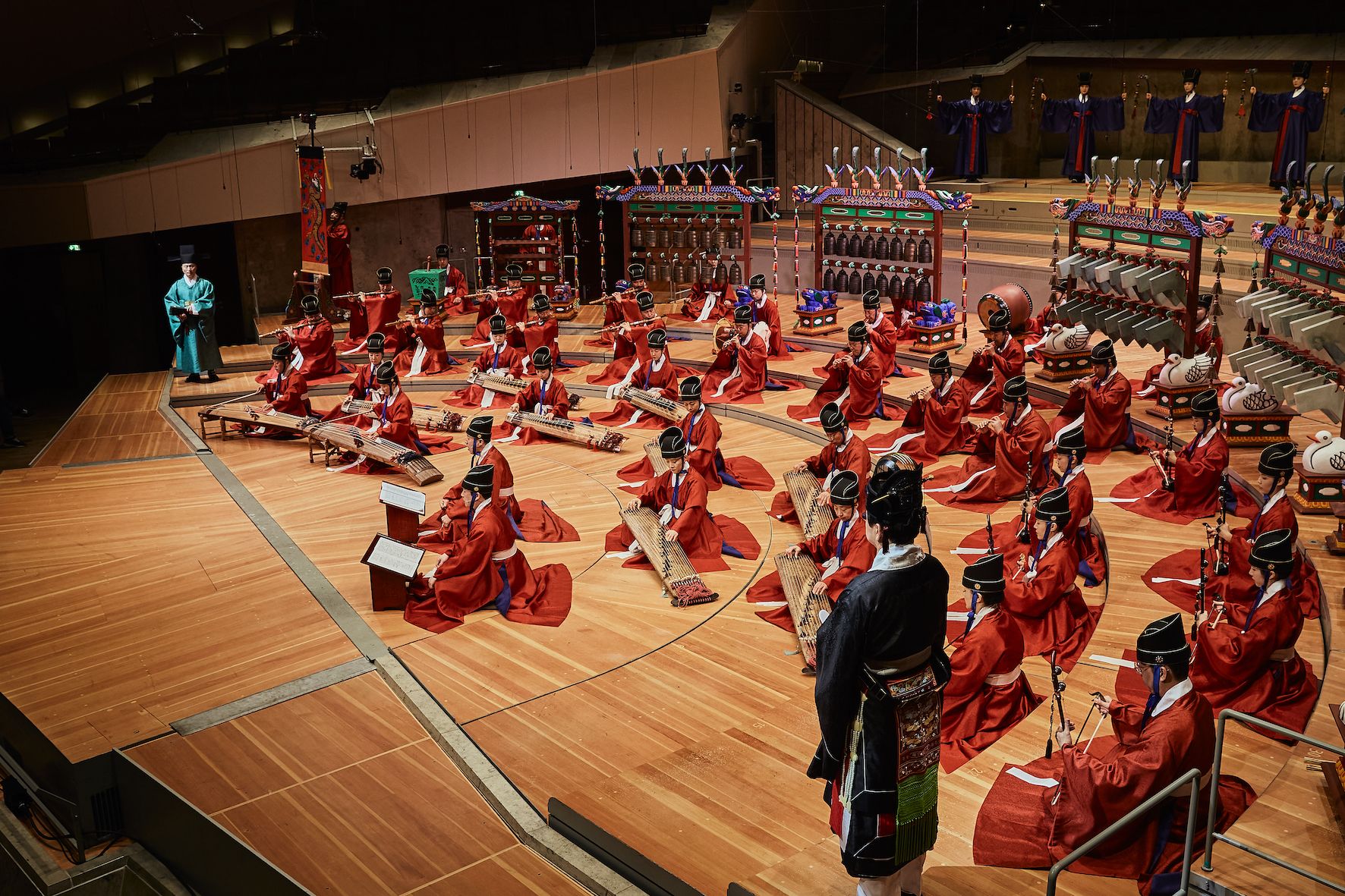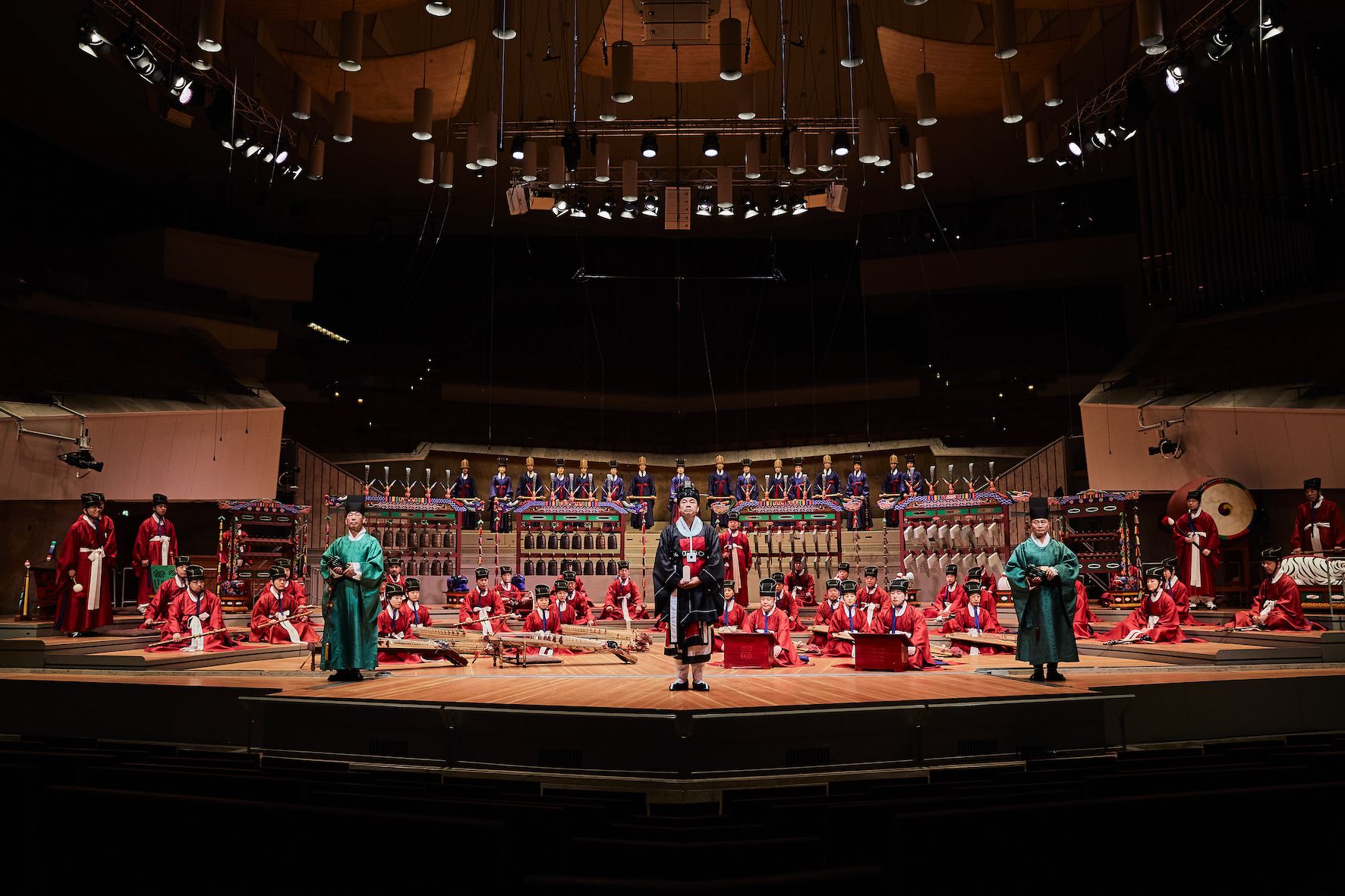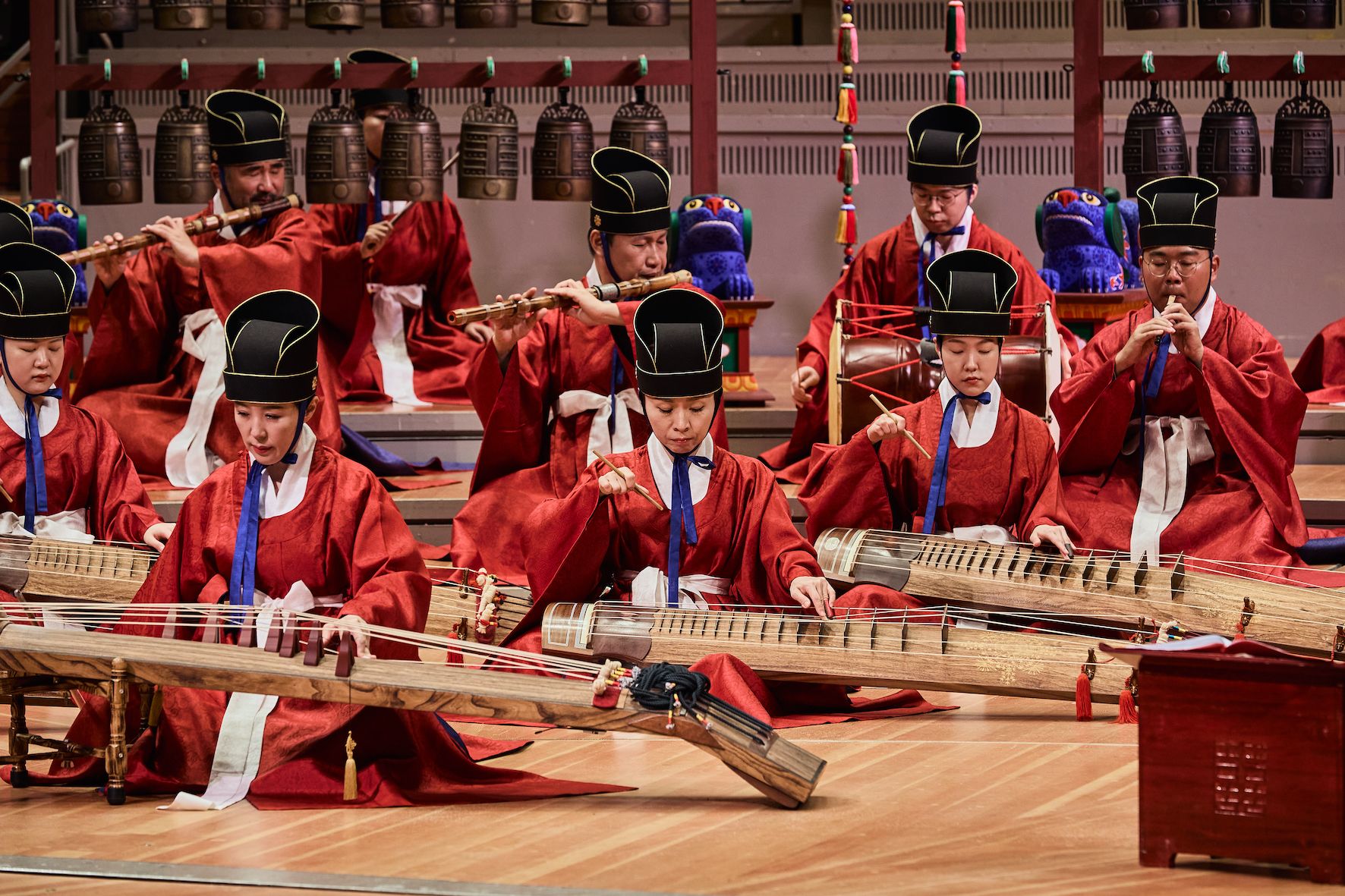Berlin Festival (3): Korean Ritual in Berlin
A fascinating, stirring occasion

Jongmyo Jeryeak: National Gugak Centre; Court Music Orchestra of NGC / Sangwon Lee (dir); Dance Theatre of NGC / Jeong-suk Yu (dir). Philharmonie, Berlin, 12.9.2022
This was an astonishing evening, celebrating 50 years of Korean-German interchange: a performance of Jongmyo Jeryeak, a multi-genre art performance combining instrumental music, singing, dancing and costumes. In 1972, the Republic of Korea and Germany signed a cultural agreement, and there has been a vibrant cultural interchange ever since.
Satisfyingly, the booklet notes refer to the ancient ritual Jongmyo Jeryeak as a ‘Gesamtkunstwerk,’ one that appears within the broader heading of ’K-sulture’ (think K-Pop and similar labelling). This is Royal, uplifting, majestic ceremonial music, song and dance from the Joseon Dynasty (1302-1910), billed as the only Royal ancestral ritual in the World that has been preserved in its original form for almost 600 years. During the Joseon Era, great ancestral ceremonies were held at the Joseon shrine. These traditions were maintained until the beginning of the 20th century – after that, they were reduced to an ancestral ceremony on the first Sunday in May.
Ancestral ritual has great importance in Asian culture. Here we have a vast canvas. For example, the Introduction is in three parts: the greeting of the ancestral spirits; the paying tribute to those Spirits; the serving of the prepared food. After the Introduction, the ritual enters its main part, in which the ancestors are offered wine three times (each section has a different name: ‘Choheonrye,’ ‘Aheonrye,’ ‘Jongheonrye’). The ritual ends with the officials in charge eating the food blessed by the Spirits, and written prayers for the Spirits are burned. It is a bifunctional ritual: a Royal Family ritual, but also a state ceremony for peace and prosperity for the land.

The ritual itself is in 27 parts, initially praising the cultural achievements of the Joseon Kings; then praising their military achievements. The first song of the first part, called ‘Huimun’ recurs in two other parts with different text. In terms of the musical language, pentatonicism (based on five note scales) is unsurprising for Asian music, but this ritual also uses heptatonic (seven-note) scales.
The performance involved 88 members of the Korean National Gugak Centre in Germany. The lavish programme included helpful explanations of the various instruments used, for example the Chuk, an ornamented green box-drum that signals the beginning of a ceremony and also helps articulate the sections, or the ‘Eo,’ a remarkable instrument in the shape of a crouching tiger with serrated back which is played in long strokes with a stick. The ‘Pyeon-Jong’ and the ‘Peon-Gyeong’ are related instruments (they look similar), metallophones with two rows of eight bells (brought to Korea from China in around the 12th century; the Pyeon-Gyong is pitched an octave lower than the Pyeong-Jong, but operates similarly); Korean drums, the Jeolgo and the Jingo (which seem to me related to the Japanese Taoko), plus assorted wind instruments such as the Dangpiri (similar to a Chinese guanzi, the lowest of a family of instruments under the heading ‘Piri,’)) and the Daegeum, a Korean bamboo flute – again there is a similar Japanese instrument, the shakuhachi - while for strings there is the Haegeum (a vertical fiddle with two strings), and the Gayageum and Geomungo, two zither-like Korean stringed instruments. The whole seems dominated by the charactertic sound of the shawm-like Taepyeongso.
The philosophy of the Koseon period was based on the idea of ’Ye-Ak’: ‘Ye’ stands for vertical order, while ‘Ak’ refers to the horizontal harmonies, which intersect to resemble a cross. ‘Ye’ is also the ritual of the living who pay their respects to the dead, which begins at Jongmyo shrine, where majestic silence reigns and where Heaven, Earth and Mankind meet to create a unity. The bodies of the living and the spirits of the dead are connected by an invisible vertical thread. The whole is a combination of music, song and dance. Invented by a Korean ruler in the 15th century, this ritual has been performed five times a year at the Imperial shrine (the Jongmyo).
From the opening section (‘Our ancestors open our future’) it was clear this was to be a very special occasion. As befits ritual praxis, the tempo is slow throughout, inviting in a shift of consciousness. Microtones are clearly part of the vocabulary, too; dancing is beautifully stylised and impeccably choreographed, both in the gestures themselves and the complete unanimity of their execution (performed as a group of eight dancers). Performance space is carefully considered, with antiphonal drums creating a sense of perspective and at times dialogue stretched over a vast canvas (the ritual lasted around an hour and a quarter and was performed straight through). Silences hummed with the vibrations of the sounds which preceded them; This is ritualistic story-telling, calling on the ancestral Kings, each of which has a particular function and attribute, while also relating the Korean strength against Japanese invasion. The final section concludes with the statement that ’our dance expresses our heartfelt Will; Please make sure it stays like this forever’.

A fascinating, stirring occasion. From a western perspective, having experienced this, one can hear all the more clearly how ritual informed the music of Birtwistle (Cortege, Ritual Fragment, The Triumph of Time), Boulez (Rituel In Memoriam Bruno Maderna) and much of the output of Karlheinz Stockhausen.
This was the first performance of a German tour, with Hamburg on September 17, Munich on September 23 and Cologne on the 26th. The Philarmonie concert is available as the Berliner Festspiele Music Library as Video on Demand here until Friday, September 23.
Presented by Berliner Festspiele / Musikfest Berlin in collaboration with the National Gugak Centre Seoul, the Korean Cultural Cenrer and the Cultural Department of the Embassy of the Republic of Korea. The tour by the National Gugak Centre is a joint initiative by the National Gugak Centre, the Korean Cultural Centre and the Cultural Department of the Embassy of the Republic of Korea, Berliner Festspiele / Musikfest Berlin, Elbphilharmonie Hamburg, Kölner Philharmonie / KölnMusik GmbH and Bayerische Rundfunk’s musica viva to mark the 50th anniversary of the Korean-German Cultural Agreement.
